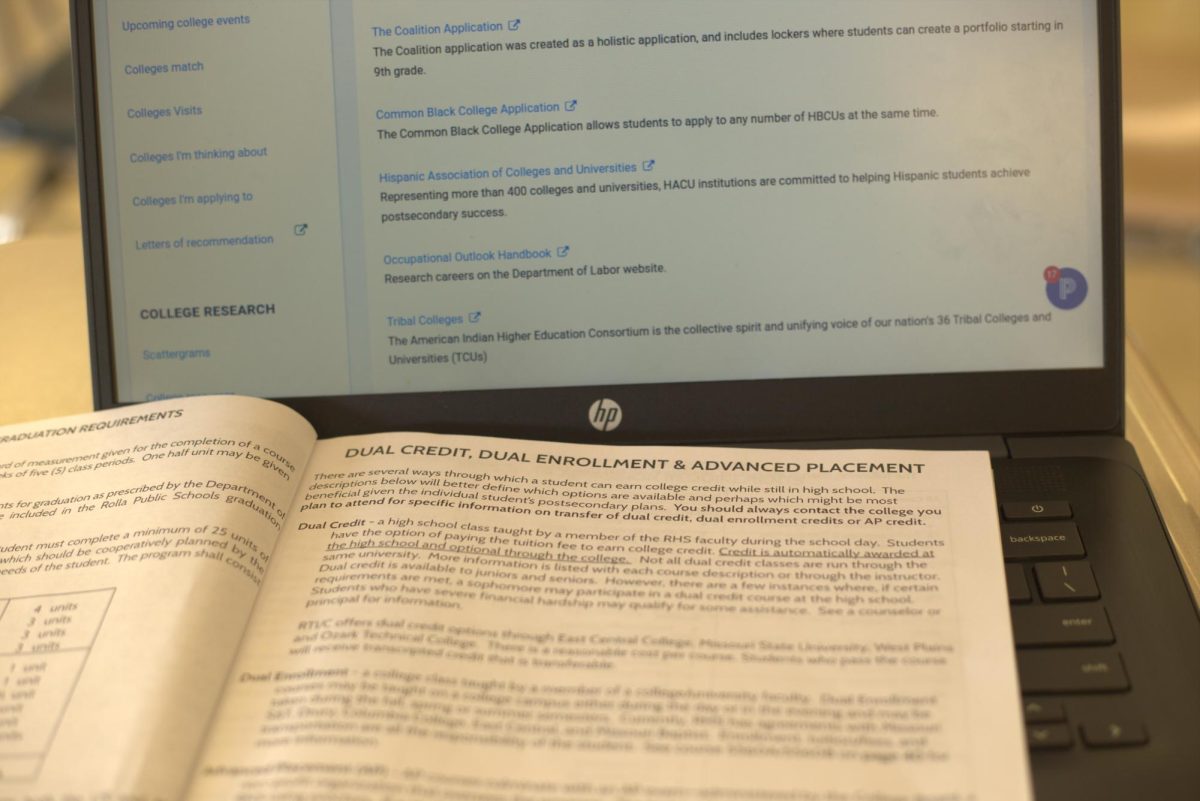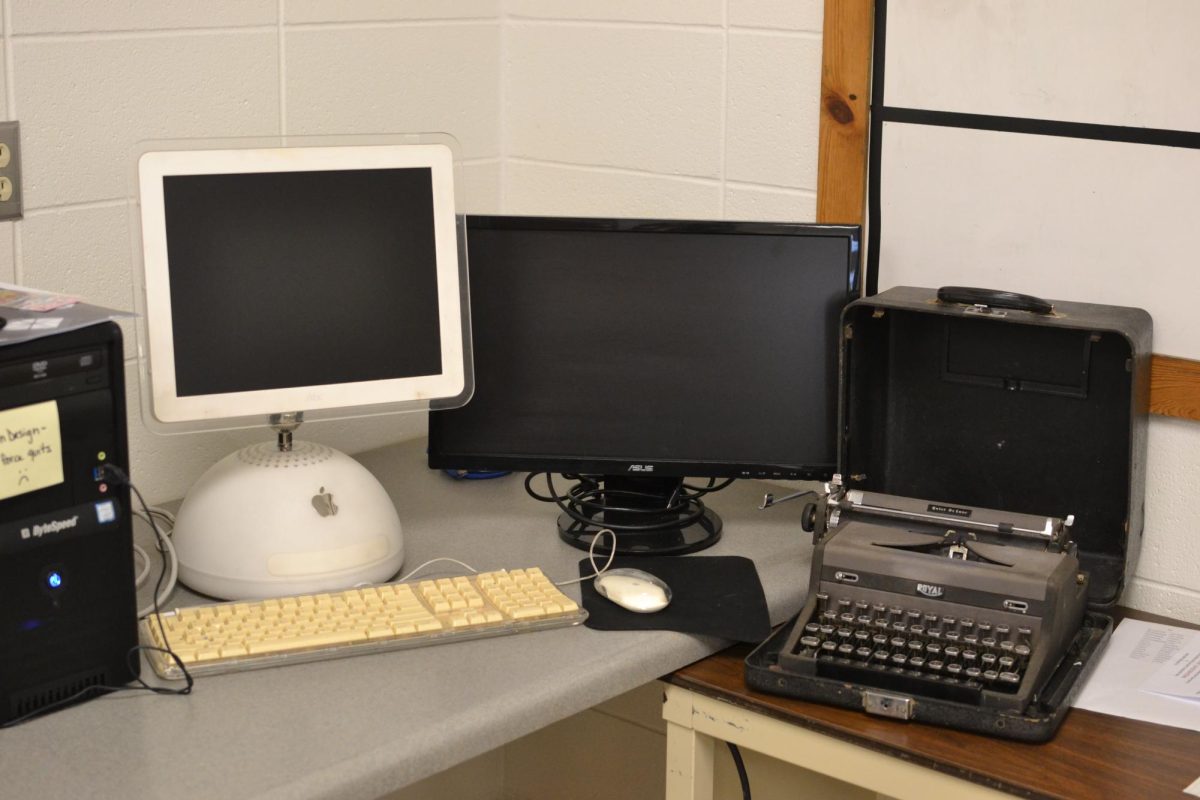It’s generally well known that Rolla High School offers a myriad of dual credit courses. Teachers use the term ‘dual credit’ to advertise their classes to students. Upperclassmen grumble about the stress or workload in their ‘dual credit’ class. But what is a ‘dual credit’ class, and why would you take one?
A dual credit course is a class that lets you earn credit hours that goes toward both high school graduation requirements and your college graduation requirements. Taking dual credit courses is a fantastic idea for any college-bound students. Meghan Williams, a former RHS student who graduated in 2022, is immensely glad that she took the opportunity to earn dual credit in high school.
“I would definitely recommend taking dual credit classes while in high school. Rolla has a ton of options and it really sets you ahead of the other students when you get to college. Most schools also have some sort of lab science requirement, which are often classes that are hard to score well in and take a lot of time, but by taking enough dual credit science courses in high school, like chemistry and anatomy, I was able to skip those,” said Williams.
Taking dual credit in high school can help make college easier in more ways than that, though. Paying for credit hours in college can cost thousands of dollars more than paying for them as dual credit.
“I have friends who complain about [required courses] all the time too, so it really was worth it. Not to mention, a year-long dual credit course in high school transfers to a semester course in college, so by taking the course in high school you are learning the material much slower which makes the course a lot easier,” advised Williams. “It also gives you time to double major or take a lighter load for a semester and still graduate on time. Even if you don’t know what you plan on majoring in, you should take all the dual credit courses you can.”
Williams took a total of 32 dual credit hours before she graduated RHS, meaning that she was able to enter college as a sophomore and skip her freshman year entirely.
“I have some friends at Mizzou who weren’t even offered dual credit options at their high schools, so I think we’re all really lucky to be given the opportunity,” reported Williams. “I have never met anyone who regrets taking dual credit classes.”
As glad as she is to have taken dual credit in high school, she has one word of caution.
“Taking dual credit is definitely worth it if you’re planning on going to college. The only scenario in which I would say not to take it is if you’re planning on going to a university that doesn’t accept it – this would typically be some sort of prestigious private institution – so I would recommend making sure the schools you’re interested in accept it,” warned Williams.
Some of the universities who are known to transfer credit if a dual credit course is taken through them are Central Methodist University, Missouri Baptist University, Avila University, Rockhurst University, Logan University, and Lindenwood University.
History teacher Michael Ellis has other reasons for encouraging students to take dual credit.
“[In high school] You can have more of a one on one relationship with the instructor. When I was at the University of Oregon, most of your basic required classes had anywhere between four hundred and five hundred students in each class…The only thing really that the professor does is walk in with a briefcase, set it down, give his lecture and then he leaves. Seriously, that’s about the extent of the relationship,” said Ellis.
Besides the drastically lower costs of taking dual credit in high school, the information in the classes is easier to learn.
“I would think you’re getting a better education at the high school level. Especially for the undergraduate classes. Here you are, you’re going for the first time to college, you don’t quite understand it all. You’re kind of learning as you go. Whereas, you know, you guys are juniors and seniors here. I think you’re comfortable with the environment and the situation and you can advocate for yourself probably more than you would be able to as an undergraduate in college,” explained Ellis.
With that information, taking dual credit class in high school is clearly a great idea for any college-bound RHS student. To maximize dual credit opportunities, plan ahead when considering what prerequisites are necessary for the dual credit courses you want to take, as well as paying attention to registration deadlines.
“If it was me, I would say it’s never too much. I would do every bit of dual credit and AP classes in high school,” Ellis said. “I only wish I got it when I was in school.”










